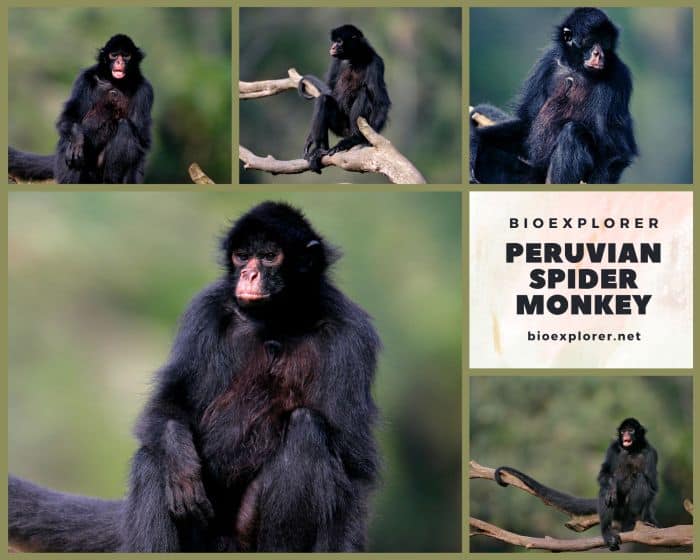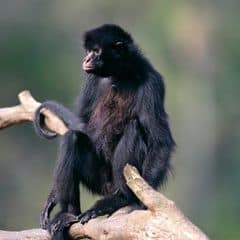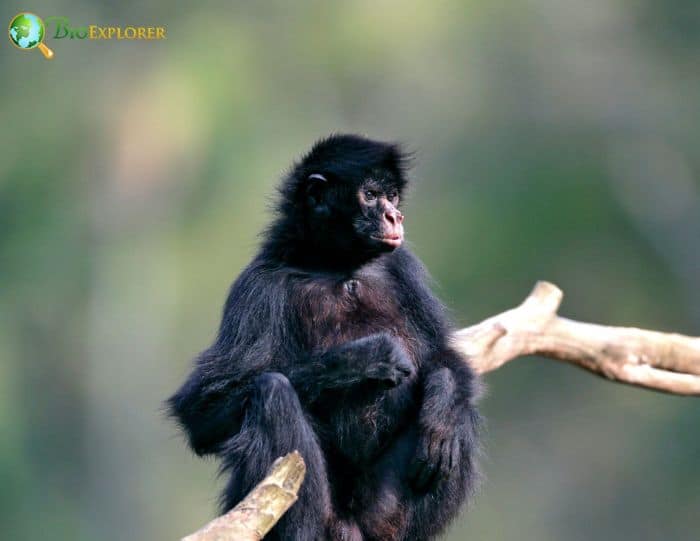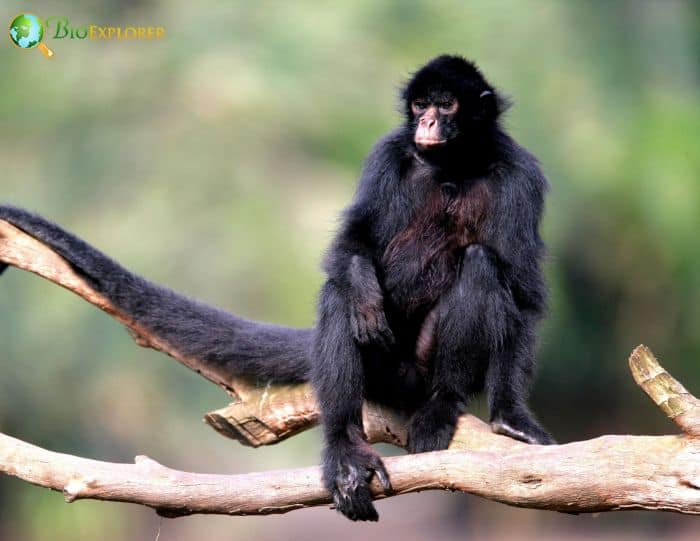
| Animalia | Primates | Atelidae | Ateles | Ateles chamek |


- Common Name: Peruvian spider monkey
- Taxonomy Classification Year: 1812
- Monkey Size: up to 70 cm (up to 28 in)
- Skin Color(s): Black
- Habitat: Forest, scrub forest
- Diet: Herbivorous
- Native Countries: Peru, Brazil, Bolivia
Peruvian Spider Monkey Distribution
Peruvian Spider Monkey Characteristics

The Peruvian spider monkey[1], also called the black-faced spider monkey, is a species native to Peru, Brazil, and Bolivia.
- Peruvian spider monkeys, like other Ateles species, have a prehensile tail that can be used to facilitate brachiation.
- Using the prehensile tail allows these primates to be highly maneuverable through the canopy.
- Peruvian Spider monkeys have a very long, flexible tail compared to other rainforest monkeys. It can be recognized by the tip of the tail, which is hairless.
- Also, they have 4 long fingers and a short (almost non-existent) thumb.
- Several external features distinguish the species from the closely related black spider monkey.
- Typically, Peruvian spider monkeys have completely black fur and complexions, unlike the lighter red-faced black spider monkey.
What Do Black Spider Monkeys Eat?

According to the study published in the International Journal of Primatology[¶], the Black Spider Monkey consumes Palma De Roasario (Euterpe precatoria), Peach Palm (Bactris gasipaes), Urucuri Palm (Attalea phalerata), Pachiuba (Socratea exorrhiza) and Chonta (Astrocaryum gratum).
Peruvian spider monkey Facts
- Typically, the weight of an adult Peruvian spider monkey ranges from 15 to 20 pounds (7 to 9 kg), representing some of the largest New-World monkeys.
- Unlike many monkey species, they only have a stunted thumb, an adaptation that allows them to use brachiation to travel.
- These Peruvian primates live in groups of 20 to 30 individuals, but these groups rarely all together simultaneously. The dynamics and size of the resulting subgroups vary depending on the social, behavioral activity, and food availability.
- They prefer to consume fleshy fruits but alter their diet in response to a lack of ripe fruit.
- Ateles chamek are independent at around 10 months and have a lifespan of around 20 years.
Suggested Reading: Different Breeds of Monkeys
Cite This Page
APA7MLA8Chicago
BioExplorer.net. (2025, May 28). Peruvian Spider Monkey. Bio Explorer. https://www.bioexplorer.net/animals/mammals/monkeys/peruvian-spider-monkey/.
BioExplorer.net. "Peruvian Spider Monkey" Bio Explorer, 28 May 2025, https://www.bioexplorer.net/animals/mammals/monkeys/peruvian-spider-monkey/.
BioExplorer.net. "Peruvian Spider Monkey" Bio Explorer, May 28 2025. https://www.bioexplorer.net/animals/mammals/monkeys/peruvian-spider-monkey/.











